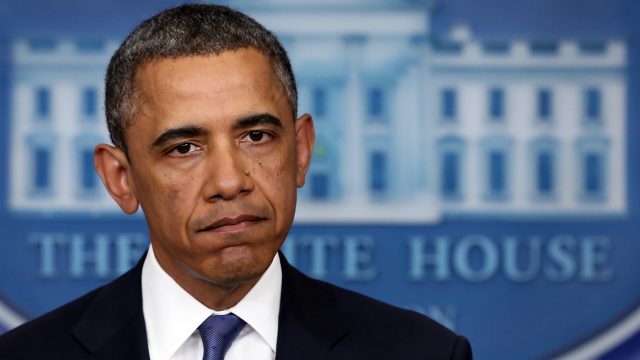Surprise: Post-Obamacare Deductibles Going Through The Roof

 Supporters of Obamacare took a victory lap when the first premium numbers were released for 2015 and the increases weren’t quite so “scary” as first thought. But there’s a reason for that. As USA Today reports, premiums aren’t going up so much because policyholders are seeing big hikes to out-of-pocket expenses:
Supporters of Obamacare took a victory lap when the first premium numbers were released for 2015 and the increases weren’t quite so “scary” as first thought. But there’s a reason for that. As USA Today reports, premiums aren’t going up so much because policyholders are seeing big hikes to out-of-pocket expenses:
A report out today puts numbers behind what hit many workers when they signed up for health insurance during open enrollment last year: deductible shock.
Premiums for employer-paid insurance are up 3% this year, but deductibles are up nearly 50% since 2009, the report by the Kaiser Family Foundation shows.
The average deductible this year is $1,217, up from $826 five years ago, Nearly 20% of workers overall have to pay at least $2,000 before their insurance kicks in, while workers at firms with 199 or fewer employees are feeling the pain of out-of-pocket costs even more: A third of these employees at small companies pay at least $2,000 deductibles.
“Skin-in-the-game insurance” is becoming the norm,says Kaiser Family Foundation CEO Drew Altman, referring to the higher percentage of health care costs employees have to share.
In other words, Obamacare isn’t “bending the cost curve” as promised. It’s simply shifting health care costs from one sort of expense to another. Instead of Americans paying more in premiums, they’re going to be paying more out of pocket. Which would be such a bad thing if the underlying problem – the skyrocketing cost of obtaining health care itself – didn’t remain.
As USA Today reports, that’s going to come as a shock to many Americans – particularly those with lower incomes – who thought Obamacare meant their insurance would cover more for less. Turns out, there’s no such thing as a free lunch:
The news about deductibles could temper some of the excitement uninsured workers may have as the Jan. 1 deadline approaches for businesses with 100 or more workers to offer coverage. Although the new Affordable Care Act-compliant plans will have to cover preventive care, such as physicals and mammograms, the plans may not be all that appealing because of their high cost-sharing and deductibles for other medical services. That’s especially true for low-wage workers, Claxton says.
The 3% increase in premiums this year brought the average annual premiums for employer-sponsored family health coverage to $16,834. Workers on average pay $4,823 annually toward the cost of a family plan, and the rest is paid by employers.
The high cost of insurance has led some companies to hope for another delay in the employer mandate deadline for offering coverage, which was extended once by President Obama.
The problem with Obamacare is that it sought to fix a problem caused by an inflexible, monolithic health insurance market by making it even less flexible and more monolithic. One of the few silver linings of Obamacare is that it does (rather unintentionally) begin to shift some costs of health care back from employers to the health care consumers, but it does so without empowering that consumer. Because of the employer mandate, most Americans will continue to get their health insurance through their employer, and that means most Americans will continue to be the consumer of health care paid for by their insurance policy but not really the customer for that policy.
As long as their is a disconnect between consumer and provider on health insurance, we will continue to have a bubble in health care costs.




